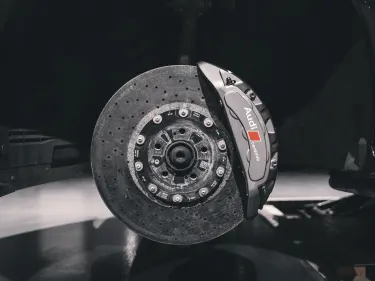Defective brakes cause hundreds of road accidents in the UK each year. While most drivers appreciate the importance of arranging a professional brake service once there is a problem, identifying an issue before it puts your safety at risk is another altogether.
Signs That Your Brakes Are Damaged
As a driver, staying responsive to subtle changes in the car’s performance and comfort can help you stay on top of various servicing issues. If you notice any of the following symptoms with your vehicle, you should investigate the brakes ASAP.
- Warning lights - perhaps the most obvious sign that you have a problem like worn brake discs or worn brake pads is that the dashboard warning lights have lit up. Do not ignore this, even if no other noticeable symptoms have surfaced.
- Long braking - of course, the weather and driving speeds will impact braking distances. Still, if you’ve found yourself braking earlier to compensate for long braking, your brakes likely need a repair or replacement.
- Vibrations - if the steering wheel or brake pedal starts to vibrate while braking, it is probably because worn brake discs or broken rotors are putting extra strain on the braking system.
- Strange noises – it doesn’t matter whether it’s audible squeaking, grinding, rattling or squealing, brake pads and discs don’t just start to make noise without a reason. So, best to get them checked.
- Pulling - if the car pulls to one side while braking, a bad brake hose or a calliper issue could be the cause. If it only happens on the front brake, it may be that only one of the brake pads is faulty.
- Leaking fluid - faulty brakes aren’t the only reason why your car may leak fluid. Whatever the cause, though, it should be inspected. Likewise, burning smells must be investigated at the earliest stage.
Other possible symptoms include spongy and soft brakes or particularly bumpy braking experiences. Once you notice a problem, a quick response is necessary.
How To Inspect Worn Brake Discs Or Worn Brake Pads
If you feel that there is an issue with your brakes, it’s important to test both the brakes and the pads. To inspect the disc brake, you should check that the face is still shiny with only small visible lines. Any clear grooves and loss of shine suggest that the disc has been damaged by general wear and tear. It needs replacing.
The brake pads facing the disc should be at least 1/8” in thickness. If they have been worn beyond this point, you should replace them ASAP. If you cannot see your brakes properly, you may need to remove the wheel before completing the visual inspection.
Think you need to get your brakes checked?
Book your vehicle in with our expert team
